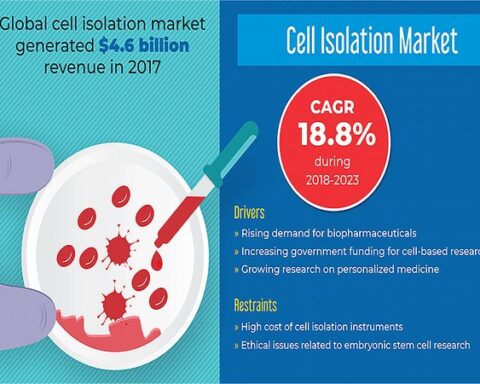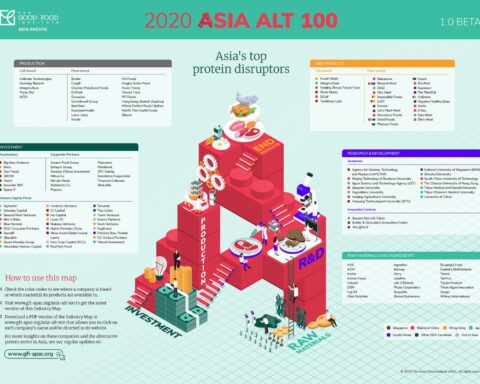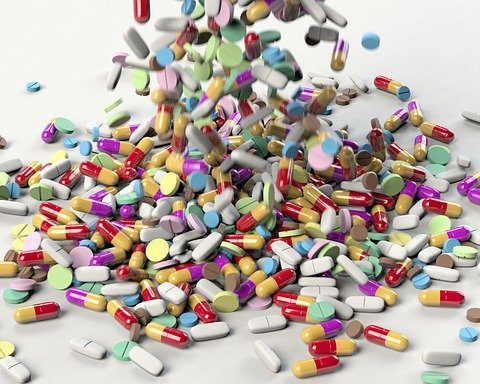The rapid growth of Saudi Arabia’s pharmaceutical market will be placed under the spotlight at the forthcoming CPhI Middle East and Africa event, as the latest industry data reveals the Kingdom’s pharmaceutical market is expected to be valued at $10.74 billion (SR40.1 billion) by 2023.
The event, sponsored by the Ministry of Health and Prevention (MoHaP), returns to the Abu Dhabi National Exhibition Center (ADNEC) from Sept. 16-18 and will explore the rapid reform of the country’s healthcare system at both regulatory and service provision levels, in line with Saudi Arabia’s Vision 2030 and the National Transformation Program.
According to the latest IQVIA Market Prognosis — Saudi Arabia report, the Kingdom’s pharmaceutical market is expected to grow at a Compound Annual Growth Rate (CAGR) of 5.5% until 2023.
Saudi Arabia is one of the largest pharmaceutical markets in the Middle East, and its expansion over recent years can be attributed to a growing population, an increase in non-communicable diseases and strong state support for health services, with major government investment in new hospitals and clinics–Cara Turner, Brand Director Pharma, Informa Markets
According to UN figures, Saudi Arabia’s population stands at an estimated 34 million, 32% of which are under 14 years and is growing at around 2% annually. Life expectancy has increased from 69 years in 1990 to over 75 years today.
Saudi Arabia covers 2.15 million sq. km and Riyadh and Jeddah are home to 6.5 and four million residents respectively, almost a third of the entire population, creating their own unique healthcare dynamics. This is in sharp contrast to over 12 million Saudis who live in isolated or sparsely populated areas, challenging consistent healthcare delivery.
“Putting that into perspective, geographically Saudi Arabia is the 12th largest country in the world, but in terms of population density, it is ranked 209,” said Turner.
In addition, the rise in non-communicable diseases such as cardiovascular diseases, cancer, chronic respiratory disease, diabetes and obesity, which tend to require long-term treatment and medication. Many of these diseases are a consequence of poor lifestyle choices, but alarmingly over 35,000 children have been diagnoses with Type 1 diabetes placing the Kingdom in the top four countries worldwide in terms of incidence.
“To address these issues, in 2019 alone, the Saudi government introduced a 17% increase ($45.86 billion) in funds allocated for spending on health and social development — with approximately $12.72 billion earmarked for spending on healthcare projects directly linked to Saudi’s Vision 2030,” added Turner.
At present pharmaceuticals manufactured overseas continue to account for the majority of the market – with around just 20% of the drugs consumed in the country made locally. The government, conscious of the growing costs of imported pharmaceuticals, along with the MoH and other health service providers has implemented long-term development strategies in a bid to promote local medicines.
Turner said: “Under the National Transformation Programme (NTP), the kingdom is working to boost the proportion of local manufacturing in the pharma-sector to approximately 40% by the end of 2020. While, the Ministry of Health (MoH) has been tasked with further localising the industry, both in terms of sources and in employment.”
“A price protection strategy for locally-produced products – such as exemptions from price cuts imposed during the re-registration process – is just one of the tools being used to attract further investment in the Saudi pharmaceutical sector in line with Vision 2030 and as an incentive for further stimulating local manufacturing in the region,” Turner added.
CPhI Middle East & Africa is the region’s leading platform that brings together pharma ingredients, product manufacturers, suppliers and buyers covering every step of the pharma supply chain from drug research and discovery to finished dosage.
The event, which recently signed a Memorandum of Understanding with the Ministry of Health and Prevention (MoHaP) to be lead sponsor and supporting partner, is set to attract attendees from the Middle East and Africa (MEA), the MENA region accounting for 4% of the global pharma market, and the rest of the world.
Over 294 local, regional and international exhibitors from more than 35 countries are expected to attend the three-day showcase. In addition to the global network of exhibitors, the event is expected to attract over 4,900 participants, more than 50 per cent of which will come from the MEA region.








